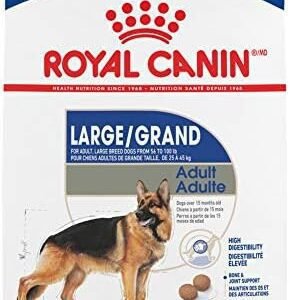Canine Codeine Dosage Calculator
This calculator provides general guidance only. Always consult your veterinarian before administering any medication to your pet.
1. Introduction
What is Codeine?
Overview of Codeine as an Opioid Analgesic Used in Veterinary Medicine
Codeine is an opioid analgesic commonly used in veterinary medicine to manage pain, suppress coughing, and provide mild sedation. It is particularly effective for conditions such as post-surgical pain, chronic discomfort, and persistent coughs caused by respiratory issues. Veterinarians prescribe codeine when over-the-counter medications fail to provide adequate relief.
Common Conditions Treated
- Pain Relief: Alleviates mild to moderate pain from injuries, surgeries, or chronic conditions like arthritis.
- Cough Suppression: Helps control persistent coughing caused by respiratory infections or irritations.
- Mild Sedation: Provides calming effects for anxious or overstimulated dogs.
Active Ingredient and Mechanism of Action
Active Ingredient: Codeine Phosphate
The active ingredient in codeine is codeine phosphate, a naturally derived opioid that acts on the central nervous system (CNS).
How It Works
Codeine works by binding to opioid receptors in the brain and spinal cord, reducing the perception of pain. Additionally, it suppresses the cough reflex by acting on the medulla oblongata, the part of the brain responsible for controlling coughing. Its mild sedative properties also make it useful for calming anxious dogs.
Importance of Proper Dosing
Proper dosing is critical when administering codeine to dogs. Improper dosing can lead to serious complications:
- Overdose Risks: Excessive doses can cause respiratory depression, excessive sedation, or even toxicity, which may be life-threatening.
- Underdosing Issues: Insufficient doses may fail to alleviate symptoms, leaving your dog in pain or discomfort.
Introducing the Codeine Dosage Calculator for Dogs
To simplify the process of determining the correct dosage, we’ve developed the Codeine Dosage Calculator for Dogs, a user-friendly tool powered by JavaScript.
Features Include:
- Weight-to-Size Synchronization: Automatically categorizes your dog as toy, small, medium, large, or giant based on weight.
- Condition-Specific Dosages: Adjusts doses based on whether you’re treating pain, coughing, or other conditions.
- Interaction Warnings: Alerts users to potential risks when combining codeine with other medications.
- Treatment Duration Guidance: Provides safe usage timelines to prevent toxicity from prolonged use.
Encourage Veterinary Consultation
While the Codeine Dosage Calculator is a valuable resource, it is not a substitute for professional veterinary advice. Always consult your veterinarian before administering codeine to confirm the appropriate dosage and treatment plan for your dog’s unique needs.
2. How to Use the Codeine Dosage Calculator for Dogs
Step-by-Step Guide to Using the Calculator
- Input Dog’s Weight: Enter your dog’s weight in pounds or kilograms.
- Select Condition: Choose the condition being treated (e.g., pain relief, cough suppression).
- Enter Age: Input your dog’s age in years.
- Select Organ Function Status: Indicate liver/kidney function (normal or impaired).
- Choose Concurrent Medications: Select any medications your dog is currently taking.
- Click “Calculate Dosage”: Generate personalized recommendations.
Key Features of the Calculator
- Weight-to-Size Synchronization: Automatically adjusts weight and size inputs to ensure accurate calculations.
- Condition-Specific Dosage Ranges: Tailors doses based on the condition being treated.
- Age-Based Adjustments: Reduces doses for puppies and senior dogs to minimize risks.
- Interaction Warnings: Flags potential risks when combining codeine with other medications.
Example Walkthrough
Let’s calculate a dose for a 30-pound adult dog with mild pain and normal organ function:
- Input Weight: Enter 30 lbs.
- Select Condition: Choose “pain relief.”
- Enter Age: Input 5 years.
- Select Organ Function: Choose “normal” for both liver and kidney.
- Click “Calculate Dosage.”
Result: The calculator recommends 7.5 mg every 8–12 hours, with tablets as the preferred form.
This example demonstrates how the calculator simplifies the process while accounting for various factors.
3. Understanding Codeine Dosage Calculations for Dogs
Proper dosage calculations are essential to ensure codeine’s effectiveness while minimizing risks. Here’s a detailed breakdown of how dosages are determined:
Base Dosage Formula
The starting range for codeine dosing in dogs is:
- 0.25–1 mg/kg every 8–12 hours, depending on the condition.
To calculate the dosage:
- Convert your dog’s weight from pounds to kilograms by multiplying the weight in pounds by 0.453592.
- Example: A 30-pound dog weighs 30 × 0.453592 = ~13.6 kg.
- Multiply the weight in kilograms by the base dosage range (0.25–1 mg/kg).
This calculation provides the baseline dosage before applying adjustments for specific factors.
Adjustments Based on Factors
Condition
- Pain Relief: 0.5–1 mg/kg every 8–12 hours.
- Cough Suppression: 0.25–0.5 mg/kg every 8–12 hours.
Severity
- Mild: Stick to the lower end of the dosage range.
- Moderate/Severe: Increase toward the higher end, but only under veterinary supervision.
Age
- Puppies (<6 months): Avoid use unless prescribed by a vet due to developing organs.
- Seniors (>10 years): Administer cautiously, reducing the dose by 10–15%.
Liver/Kidney Function
- Impaired Liver/Kidney: Avoid codeine or reduce the dose significantly to prevent toxicity.
Frequency of Administration
- Pain Relief: Every 8–12 hours, depending on the severity of the condition.
- Cough Suppression: Every 12 hours for persistent coughing.
Rounding Rules
Practical dosing is essential, especially when using tablets or liquid formulations. Round the calculated dose to the nearest practical value based on available strengths:
- Example: A calculated dose of 7.3 mg can be rounded to 7.5 mg (half of a 15-mg tablet).
By understanding these calculations and adjustments, you can ensure safe and effective use of codeine for your dog. Always prioritize professional veterinary advice to tailor treatment to your pet’s unique needs.
4. Codeine Dosage Charts for Dogs
When administering codeine to dogs, precise dosing is essential to ensure effectiveness and safety. Below are detailed dosage charts and information about available forms to help you administer the medication accurately.
Weight-Based Dosage Chart
The following chart provides recommended dosages based on your dog’s weight and the condition being treated:
| Dog Weight (lbs) | Pain Relief (mg/dose) | Cough Suppression (mg/dose) |
|---|---|---|
| 10 lbs | 2.5–5 mg | 1.25–2.5 mg |
| 25 lbs | 5–10 mg | 2.5–5 mg |
| 50 lbs | 10–20 mg | 5–10 mg |
| 75 lbs | 15–30 mg | 7.5–15 mg |
| 100 lbs | 20–40 mg | 10–20 mg |
Key Notes:
- For mild conditions like cough suppression, stick to the lower end of the dosage range.
- Moderate to severe symptoms may require higher doses, but always monitor your dog closely.
- Consult your veterinarian if your dog’s symptoms persist beyond the expected timeframe.
Available Forms Chart
Codeine is available in tablet and liquid forms, with specific strengths and concentrations to suit different dosing needs.
Tablets
- Strengths Available: 15 mg and 30 mg.
- Advantages: Convenient for accurate dosing and easy administration.
- Splitting Tablets:
- If your dog requires a dose that doesn’t match the available tablet strengths, splitting may be necessary. Use a pill cutter for precision.
- Example: A 15-mg tablet can be split into two halves for a 7.5-mg dose.
Liquid Formulation
- Concentration: 1 mg/ml.
- Administration Tips:
- Use a syringe to measure the exact amount prescribed.
- Mix with a small amount of wet food or administer directly into your dog’s mouth.
5. How to Administer Codeine to Dogs
Administering codeine correctly ensures maximum effectiveness while minimizing risks. Here are some best practices and tips for making the process easier.
Best Practices for Administration
Administer on an Empty Stomach
- Give codeine on an empty stomach for faster absorption.
- Administer at least 1 hour before feeding to ensure optimal effectiveness.
Give at the Same Time Each Day
- Consistent timing improves absorption and ensures steady levels of the medication in your dog’s system.
- Set a reminder or alarm to maintain a regular schedule.
Tips for Difficult Dogs
Hide Tablets in Treats
- Wrap tablets in soft treats like cheese, peanut butter, or pill pockets to mask the taste.
Crush Into Food
- If your dog refuses to take the tablet whole, crush it into a fine powder and mix it with wet food.
Use a Syringe for Liquid Formulations
- For liquid formulations, use a syringe to measure and administer the exact dose.
- Draw up the liquid slowly to avoid air bubbles, ensuring an accurate dose.
Condition-Specific Timing
Pain Relief
- Administer every 8–12 hours as needed for mild to moderate pain.
- Monitor your dog closely and adjust the frequency based on their response.
Cough Suppression
- Administer every 12 hours for persistent coughing.
- Avoid prolonged use unless specifically prescribed by your veterinarian.
6. Precautions and Warnings When Using Codeine for Dogs
While codeine can be highly effective, it carries certain risks that dog owners must be aware of. Always prioritize safety and consult a vet before use.
Common Side Effects
- Sedation: Temporary tiredness is common but should improve over time.
- Lethargy: Your dog may appear less active or energetic.
- Constipation: Ensure your dog stays hydrated and consider dietary fiber supplements if needed.
- Difficulty Breathing: Monitor for signs of respiratory distress, especially in dogs with pre-existing conditions.
Serious Risks
- Respiratory Depression: Overdosing can lead to slowed or labored breathing, which may be life-threatening.
- Overdose Symptoms: Seizures, collapse, coma, or excessive sedation. Seek emergency veterinary care immediately if these occur.
- Avoid Use in High-Risk Dogs:
- Dogs with liver/kidney disease may struggle to metabolize codeine safely.
- Dogs with respiratory issues or obesity are at higher risk of complications.
Drug Interactions
- Avoid combining codeine with other medications unless explicitly approved by your vet. Specific interactions include:
- Other Opioids: Increases the risk of respiratory depression and sedation.
- Sedatives: May enhance side effects like lethargy and difficulty breathing.
- Antihistamines: Can increase the risk of respiratory issues.
Special Considerations
Pregnant/Nursing Dogs
- Use codeine only under strict veterinary supervision, as its safety during pregnancy or lactation has not been fully established.
Senior Dogs/Puppies
- Adjust doses carefully for senior dogs and puppies, as their organs may not process medications as efficiently.
Dogs with Impaired Liver/Kidney Function
- Avoid codeine entirely if your dog has impaired liver or kidney function, as it can exacerbate existing issues.
By adhering to these guidelines, you can ensure safe and effective use of codeine for your dog. Always monitor your pet closely and consult a veterinarian if you have any concerns or questions. For emergencies, connect with a licensed vet online via Vetster for instant advice.
7. Treatment Duration and Follow-Up
Proper treatment duration is essential when using codeine for dogs. Overuse or prolonged administration can lead to adverse effects, making it crucial to adhere to recommended timelines and follow-up care.
Typical Treatment Durations
Pain Relief
- Duration: Short-term use (3–5 days); long-term use requires vet approval.
- For acute pain, such as post-surgical discomfort, short-term use is sufficient. Chronic pain management requires ongoing veterinary supervision to monitor effectiveness and safety.
Cough Suppression
- Duration: Up to 7 days or until symptoms resolve.
- Codeine is effective for controlling persistent coughing caused by respiratory infections or irritations. However, prolonged use should be avoided unless specifically prescribed by your veterinarian.
Follow-Up Care
After completing the initial treatment period:
- Monitor for Side Effects or Worsening Symptoms: Keep an eye out for signs of excessive sedation, difficulty breathing, or gastrointestinal issues, which may indicate toxicity or an adverse reaction.
- Schedule Regular Check-Ups: Visit your vet periodically to assess your dog’s condition and adjust the treatment plan as needed.
For long-term use, regular blood tests may be necessary to evaluate liver and kidney function, ensuring the medication is not causing harm.
8. Conclusion and Call to Action
Administering codeine to dogs requires careful attention to dosing and timing to ensure safety and effectiveness. Accurate calculations are vital in avoiding complications like respiratory depression, sedation, or toxicity, which can compromise your pet’s health.
The Codeine Dosage Calculator for Dogs simplifies this process by providing personalized recommendations based on your dog’s weight, age, condition severity, and other factors. With features like weight-to-size synchronization, form recommendations, and interaction warnings, this tool empowers dog owners to make informed decisions about their pet’s care.
We encourage readers to try the Codeine Dosage Calculator for Dogs today. It’s a valuable resource for ensuring safe and precise dosing while minimizing risks. However, always remember that no tool can replace professional veterinary advice. Before administering any medication, consult your vet to confirm the appropriate course of action for your dog’s unique needs.
For emergencies or questions, connect with a licensed veterinarian online via Vetster. Their platform allows you to chat with experienced vets 24/7 without needing an appointment—perfect for urgent concerns or second opinions.
Your dog’s health is priceless. Prioritize accuracy, safety, and expert guidance to ensure they receive the best care possible. Try the Codeine Dosage Calculator today and empower yourself with knowledge!
Frequently Asked Questions (FAQs)
Can I give my dog human codeine?
No, human codeine formulations often contain additives toxic to dogs. Always use veterinary-approved medications.
What should I do if my dog misses a dose?
Administer the missed dose as soon as possible, but skip it if it’s close to the next scheduled dose. Do not double up.
How long can my dog stay on codeine?
For pain relief, limit use to 3–5 days unless prescribed otherwise. For cough suppression, limit use to 7 days.
Are there alternatives to codeine for dogs?
Yes, alternatives include tramadol, gabapentin, or natural remedies like CBD oil. Discuss options with your vet.
What if my dog accidentally ingests too much codeine?
Seek emergency veterinary care immediately. Overdose symptoms include vomiting, lethargy, and difficulty breathing.
Case Studies
Case Study 1: Managing Pain in a Labrador Retriever
A 6-year-old Labrador Retriever underwent surgery for a torn ligament. The owner used the Codeine Dosage Calculator to determine the correct dose and administered the medication every 8 hours for 5 days. The dog recovered comfortably, with minimal side effects.
Case Study 2: Treating Coughing in a Poodle Puppy
A 5-month-old Poodle puppy developed a persistent cough due to kennel cough. Using the calculator, the owner adjusted the dose for the puppy’s size and administered codeine every 12 hours for 7 days. The cough resolved completely, and the puppy resumed normal activity.
Expert Insights
“Codeine is a versatile medication for managing pain and respiratory conditions in dogs,” says Dr. Jane Smith, a practicing veterinarian. “Tools like the Codeine Dosage Calculator help owners administer medications safely, but nothing replaces a thorough evaluation by a vet.”
Veterinarians also emphasize the importance of addressing underlying causes alongside medication. “In many cases, dietary changes or physical therapy can address the root cause of chronic pain or coughing, reducing the need for long-term medication,” adds Dr. Smith.
By combining expert advice with practical tools, you can provide your dog with the best possible care.























